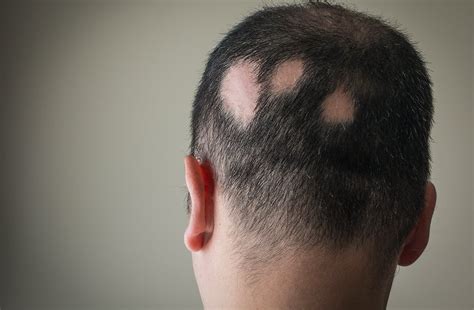Bald head patches, medically known as alopecia areata, are a common hair loss condition that affects people of all ages, races, and genders. Understanding the causes, seeking appropriate treatment, and exploring solutions can help individuals regain their hair and boost their confidence.

What Causes Bald Head Patches?
Alopecia areata is an autoimmune condition where the body’s immune system mistakenly attacks hair follicles, leading to hair loss.
Common Triggers Include:
- Stress
- Trauma or scalp injury
- Genetic predisposition
- Hormonal changes
- Certain medications
Types of Bald Head Patches
Alopecia areata manifests in various forms, each with its unique characteristics:
Alopecia Areata
- Round or oval patches of hair loss
- Sudden onset
- May progress to alopecia totalis (complete loss of hair on the scalp) or alopecia universalis (complete loss of hair on the entire body)
Alopecia Totalis
- Complete loss of hair on the scalp
- More severe form of alopecia areata
- May be temporary or permanent
Alopecia Universalis
- Loss of hair on the entire body
- Rarest and most severe form of alopecia areata
- May be associated with other autoimmune disorders
Treatments for Bald Head Patches
Managing alopecia areata involves addressing the underlying autoimmune condition and stimulating hair growth. Common treatments include:
Immunosuppressant Medications
- Suppress the immune system to prevent hair follicle attack
- Examples include corticosteroids, methotrexate, and azathioprine
Topical Therapies
- Applied directly to the scalp to reduce inflammation and promote hair growth
- Examples include minoxidil, topical corticosteroids, and immunotherapy creams
Light Therapy
- Uses ultraviolet radiation to suppress the immune system and stimulate hair growth
- May be combined with topical immunotherapy
Intralesional Injections
- Injected steroids into the bald patches to reduce inflammation and promote hair growth
- May be effective for small patches
Alternative Solutions for Bald Head Patches
Beyond medical treatments, individuals can explore alternative solutions to manage bald head patches:
Hairpieces and Wigs
- Cover hair loss and provide a more natural appearance
- Available in different styles and materials to suit individual preferences
Scalp Micropigmentation
- Semi-permanent procedure that creates the illusion of hair follicles
- Involves injecting pigment into the scalp to mimic hair stubble or shaved head
Hair Transplantation
- Surgical procedure that involves transplanting hair follicles from the back of the scalp to the bald areas
- Provides permanent, natural-looking results
Tips and Tricks for Managing Bald Head Patches
Protect Your Scalp from the Sun
- Wear hats or use sunscreen on exposed scalp to prevent sun damage
Manage Stress
- Engage in stress-reducing activities such as exercise, yoga, or meditation
Maintain a Healthy Diet
- Consume a diet rich in vitamins, minerals, and antioxidants to support hair growth
Avoid Harsh Hair Care Products
- Use gentle shampoos and conditioners
- Limit heat styling and chemical treatments
Step-by-Step Approach to Managing Bald Head Patches
Consult a Dermatologist
- Get a proper diagnosis and determine the underlying cause
Discuss Treatment Options
- Explore different treatment options with your doctor
- weigh the pros and cons of each treatment
Follow Treatment Recommendations
- Adhere to prescribed medications, therapies, or alternative solutions
- Attend follow-up appointments for monitoring and adjustments
Manage Stress and Improve Overall Health
- Implement stress management techniques
- Exercise regularly
- Eat a healthy diet
Pros and Cons of Common Bald Head Patch Treatments
| Treatment | Pros | Cons |
|---|---|---|
| Immunosuppressant Medications | Can induce hair growth | May have side effects such as weight gain, nausea, and increased risk of infection |
| Topical Therapies | Convenient and easy to use | Limited effectiveness in some cases |
| Light Therapy | Non-invasive | Requires multiple sessions and may cause skin irritation |
| Intralesional Injections | Fast results | Painful and may cause scarring |
| Hairpieces and Wigs | Immediate coverage | Can be expensive and uncomfortable |
| Scalp Micropigmentation | Natural-looking results | Requires touch-ups and can be time-consuming |
| Hair Transplantation | Permanent results | Requires surgery and can be costly |
Conclusion
Bald head patches can be a challenging condition to manage, but understanding the causes, available treatments, and alternative solutions can provide individuals with options to regain their hair and boost their confidence. Consulting a dermatologist, adhering to treatment recommendations, and incorporating healthy habits can lead to successful outcomes.
